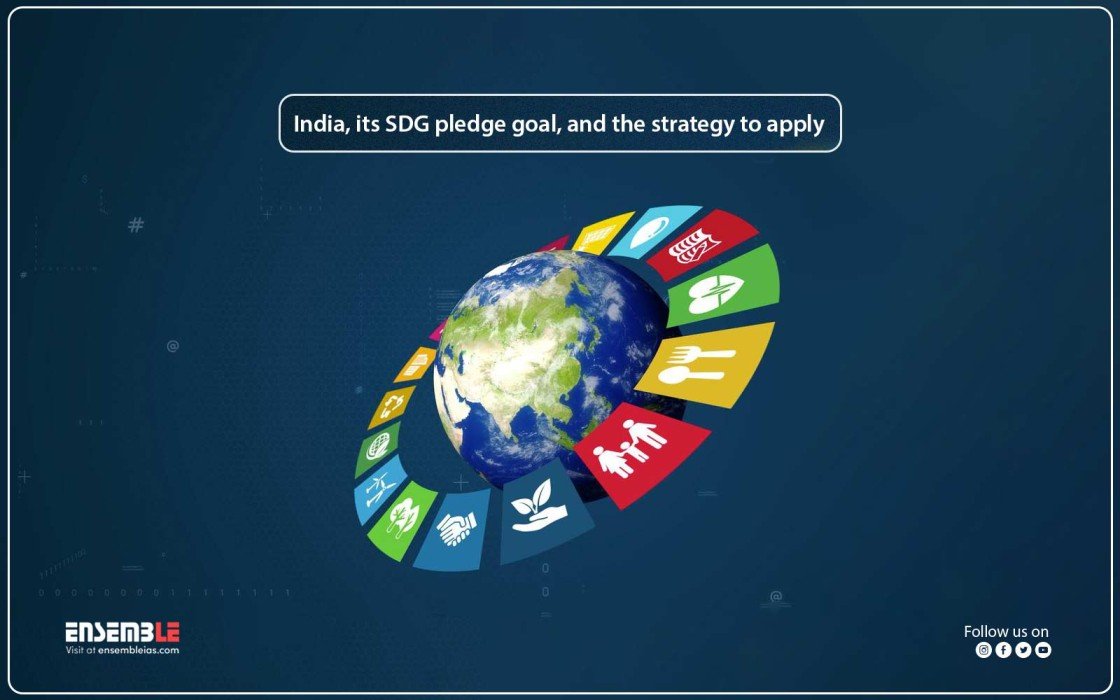Overview: Progress on Sustainable Development Goals (SDG) seems to be slowing down. Regardless of the global progress that has been made to date, the sheer population size of India means that realising Sustainable Development Goals (SDGs) at a global scale is intrinsically tied to the success of India.
– The SDGs framework sets targets for 231 unique indicators across 17 SDG goals related to economic
development, social welfare and environmental sustainability, to be met by 2030.
– A recent study assesses India’s progress on 33 welfare indicators, covering nine SDGs and providing a
mixed picture of positive and concerning trends.
– India is ‘On-Target’ to meeting 14 of the 33 SDGs, including indicators for neonatal and under-five
mortality, full vaccination, improved sanitation, and electricity access, all of which have
substantially improved in the last five years.
– Neonatal and under-five mortality are currently both ‘On-Target’ for the country, 286 and 208
districts (out of 707 districts), respectively, are not. Similarly, significant progress on access to
improved sanitation excludes 129 districts that are not on course to meet this SDG indicator.
About SDGs-
– The Sustainable Development Goals (SDGs), also known as the Global Goals, were adopted by the United
Nations in 2015 as a universal call to action to end poverty, protect the planet, and ensure that by
2030 all people enjoy peace and prosperity.
– The Goals and targets will stimulate action over the next fifteen years in areas of critical
importance for humanity and the planet.
– This Agenda is a plan of action for people, the planet and prosperity. It also seeks to strengthen
universal peace in larger freedom. We recognise that eradicating poverty in all its forms and
dimensions, including extreme poverty, is the greatest global challenge and an indispensable
requirement for sustainable development. All countries and all stakeholders, acting in collaborative
partnership, will implement this plan
India’s action plan on SDGs-
– India’s commitment to SDGs, the country’s parliament has organised several forums to develop policy
and action perspectives on the elimination of poverty, promoting gender equality, addressing climate
changes, inclusive economic growth and minimizing the emissions intensity of GDP as well as creating
an additional carbon sink.
– Measures are taken for implementing SDGs in India
1. NITI Aayog is promoting a national network of collaboration between relevant ministries and
stakeholders and different actors which are part of the development agenda and implementation
processes by SAMAVESH.
2. Ministry of Statistics and programme implementation (MoSPI)- tracking progress and determining
the extent to which targets and goals have been met. MoSPI has created 306 national indicators
in line with the 169 SDGs targets and global indicators framework. 62 priority indicators out of
306 indicators have been established for measuring India’s most essential developmental goals.
MoSPI has formed six best sectoral committees on SDGs from different ministries, UN agencies and
research institutions to collaborate on developing the methodology for SDGs global indicators
and identifying data gaps in SDGs monitoring. Six committees are-
I. Food security, agriculture, and poverty;
II. Labour & employment and education;
III. Health and gender-related issues;
IV. Climate change and the environment;
V. Capacity building and good governance;
VI. Big data, artificial intelligence, blockchain, and machine learning for SDGs.
3. Monitoring and evaluation- the High-level political forum on sustainable development (HLPF) at
the global level plays a key role in global assessment and reporting on SDGs and providing
further direction.
– India will continue to focus on nurturing partnerships at regional and global levels. It will work
towards ensuring a greater flow of finances and technology from developed countries- in alignment
with their explicit commitment in the context of the 2030 agenda- to developing and least developed
nations.
– India’s development mantra evolving as collective efforts and inclusive development – Sabka Saath
Sabka Vikas.






